Painting Small House Interiors

You probably believe that you have to use every technique in the book to make your area look larger if you don't have a lot of square footage.
Painting small house interiors is in the swatch book, though, and that could be the easiest fix.
These are the ideal colors for every room in a small house, whether it be the tiny living room or bedroom, or a claustrophobic corridor. They range from dramatic and dark to light and cheerful.
Choosing Light and Airy Colors
A pale color's Light Reflectance Value (LRV) is high. This indicates that a higher proportion of the light incident on them is reflected. This reflected light makes a tiny place feel brighter and more airy.
The optical receding effect of pale hues makes walls appear further away. This gives the impression that the room is bigger.
Below we have mentioned some of the most popular small room paint ideas:
Pale blue
The lightness and airiness of pale blue may elongate and expand a tiny space. It optically withdraws, giving the impression of transparency and depth.
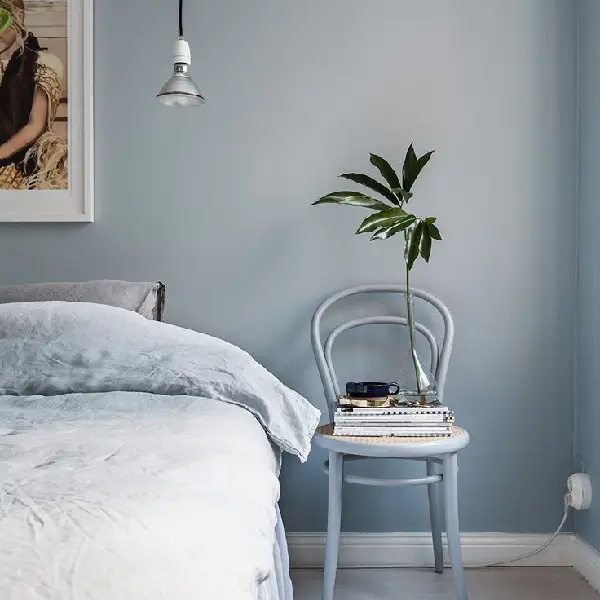
This serene color is perfect for establishing a quiet and pleasant mood in a small area since it exudes a sense of serenity and tranquillity.
Pale green
Light and airy colors like pale green may provide the impression of more space and openness in a tiny space. Because of its good light reflection, the space looks bigger and brighter.
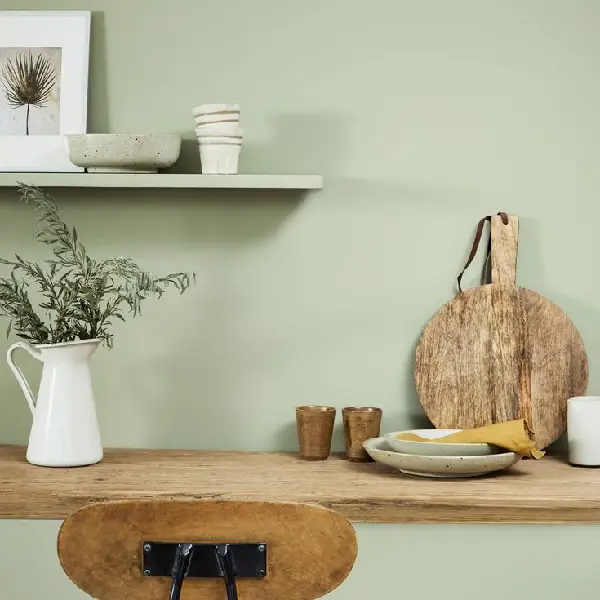
In a tiny room, the soothing hue of pale green may instill a sense of serenity and tranquility. It has a connection to the outdoors and nature, which helps ease anxiety and tension.
In a tiny space, pale green is a hue that can be used in many different ways because of its versatility.
Pale gray
The lightness and airiness of pale gray may visually enlarge a tiny space and give it a more airy, open sense. Therefore, it is the best option between small house exterior colors.
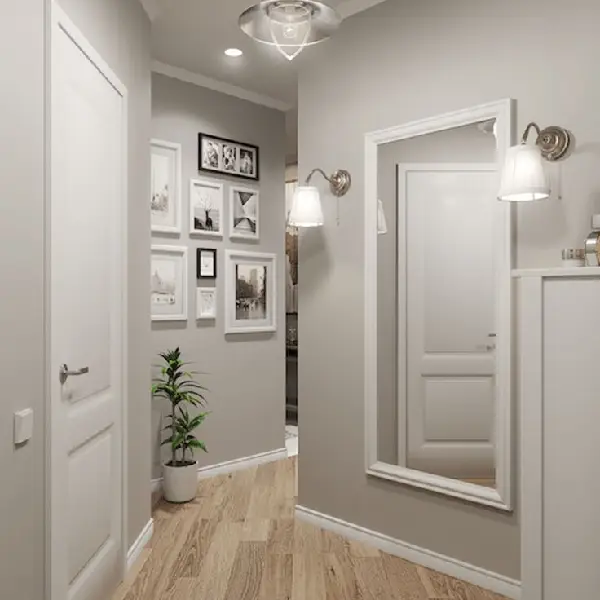
When used as a neutral backdrop, pale gray makes other design components, like furniture, artwork, and accessories, pop. As a result, the appearance is balanced and unified.
Grayed-down atmosphere blue
Grayed-down Atmosphere Blue is a subdued hue of blue that is frequently used in décor and interior design to provide a tranquil and comforting ambiance.
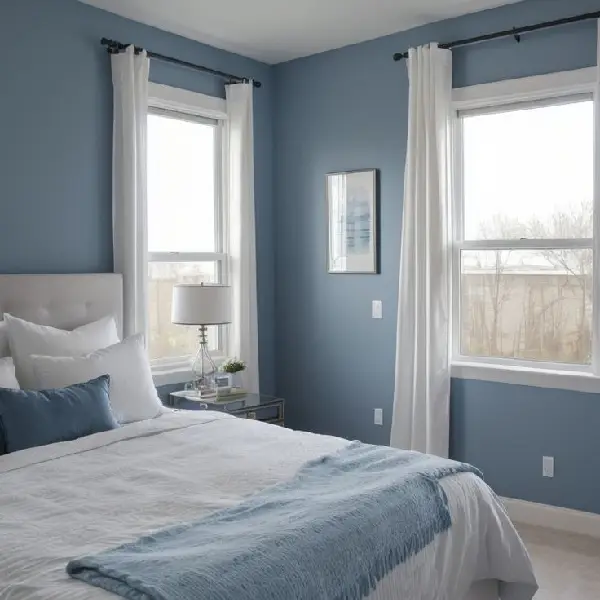
It is a hue that works well in many settings, including living rooms and bedrooms.
Painters can produce Graded-down Atmosphere Blue by combining a small amount of gray paint with sky blue paint.
Yellow-green shades
Shades of yellow-green can provide the illusion of more space and lightness in a tiny space.
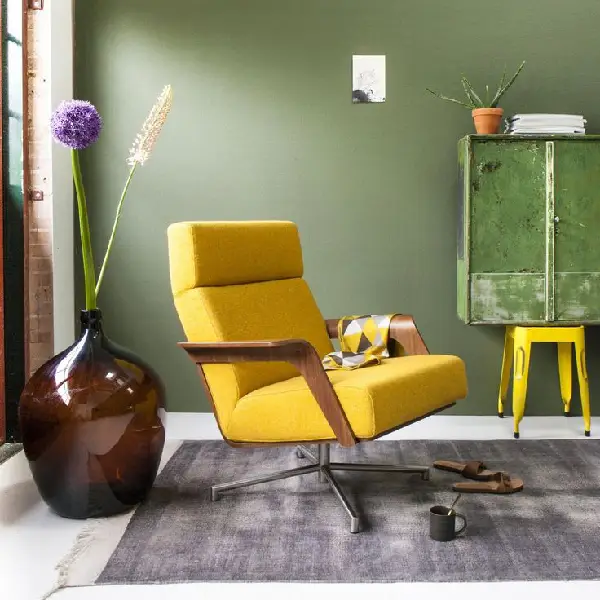
These colors' lighter hues reflect more light, giving the impression that the area is larger.
Furthermore, the connection to nature can create emotions of freedom and openness.
Nuanced pale shades
Since the pure white might feel a little too bland, you can consider nuanced pale shades of paint color for a small room instead.
A vast spectrum of colors that are distinguished by their intricacy and subtlety are included in faint light tones. They frequently arouse feelings of refinement, peace, and elegance.
The delicate interactions between many hues, tones, and tints give subtle colors their depth and complexity, setting them apart from plain, flat colors.
There are several ways to accomplish this interaction, including layering, mixing, and glazing.
Bringing the Outdoors Indoors
Below we have explored the best paint color for small rooms you can choose to bring outdoors indoors.
Pittsburgh Paints’ Dill
Dill has an undertone of ivy and is a rich, muted toad green. This hue is adaptable and looks great as an accent wall, in kitchens and baths, or all over a calm area like a living room or library.
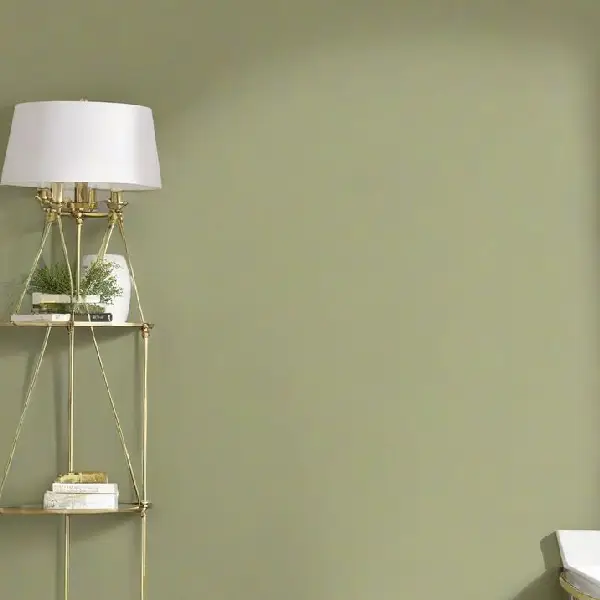
Dill is characterized as having an undertone of ivy and being a rich, muted toad green.
This indicates that it is a rich, dark green with a tinge of gray and yellow. It's a sophisticated hue that can give any area depth and appeal.
This deep green may provide a sense of natural connection in a space. Combine it with white accents for a modern, roomy appearance.
Creating a Cozy Glow with Warm Hues
Strong colors that complement modest areas devoid of striking architectural elements are highlighted below.
To add to the cozy atmosphere of dens, alcoves, and foyers, think about utilizing warm color schemes.
Red hues
Choose subdued or dusty red hues, such as brick, burgundy, or terracotta. These colors create a gentler, more muted presence while yet having the warmth of red.
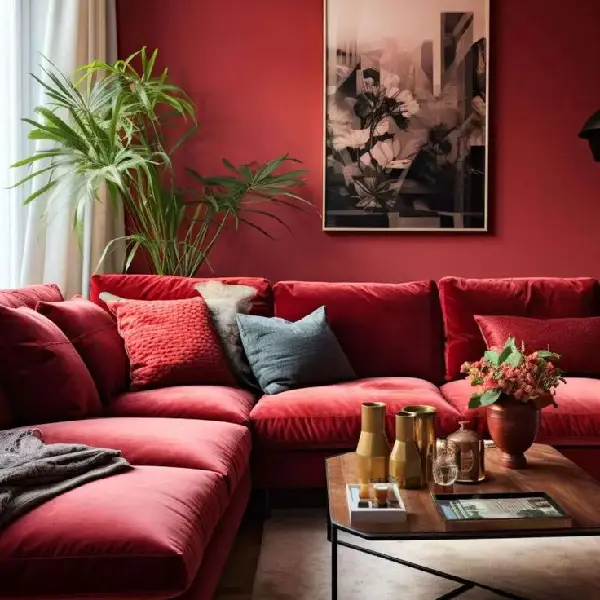
They may enhance a tiny space without taking over by adding richness and depth.
Make sure there is enough artificial or natural illumination to offset the possible shrinking impact of red.
Yellow hues
Yellow colors may provide the impression of greater light and space in a tiny space. This is so that the space appears larger since bright colors reflect more light.
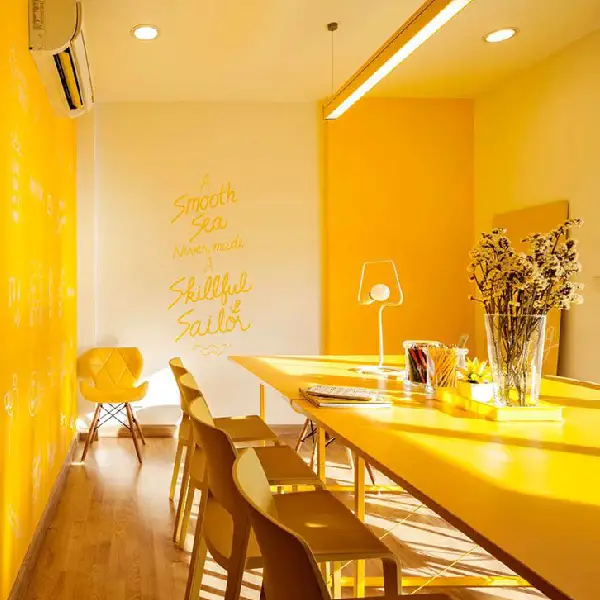
Yellow is a happy, upbeat hue that may make you feel better. It's a fantastic option if you want to create a cheery and welcoming ambiance in a tiny space.
Orange hues
Although some people think orange colors would overpower a tiny room, when applied carefully, they may really be extremely advantageous.
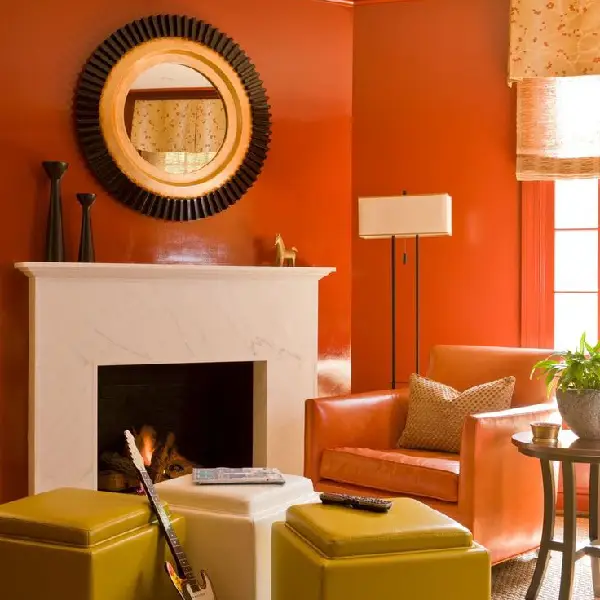
Peach and apricot, two lighter tones of orange, can be used to create a cozy and welcoming ambiance, especially in the evening. These colors may also invigorate a tiny area in the morning, giving it a much-needed lift.
Reddish purple
Because it may produce a warm and inviting ambiance, reddish-purple is an excellent color option for a small space.

Warm reddish-purple hues may offer a hint of refinement while also creating a cozier, more welcoming atmosphere.
Maintaining a Wet Edge While Painting
When painting, keeping the edge moist is essential to getting a smooth, polished finish. Before the paint dries, every roller stroke should overlap the one before it.
Here are some essential pointers:
- Work in sections: Break up your painting job into manageable chunks and focus on each one separately. This helps you keep the paint moist and prevents lines from showing where portions join.
- Make use of a high-quality roller: Get a high-quality roller with a cover made of natural fibers, such lamb's wool. There's less need for regular dips when using these rollers since they retain more paint and release it evenly.
- Paint should be applied in overlapping strokes. To achieve a seamless transition between areas, overlap your strokes by approximately 6 inches when rolling or brushing. This keeps the paint from showing lines and helps blend it.
Additional interior painting tips for flawless finishes
Below are the most important tips for painting small house interiors:
- Prepare the room: Remove light fixtures, doorknobs, strikes, electrical cover plates, and window locks and lifts to prepare a space for painting. Experts usually steer clear of painter's tape because it takes a lot of time to apply. Examine walls and trim carefully for flaws; fill in holes, dents, and dings with wood filler on trim and ready-mix spackle on walls.
- Apply the primer: When recoating walls and trim that are in good condition and have previously been painted in a similar shade and formulation, the primer may not always be required. But to seal the surface of freshly installed plaster and drywall, primer is necessary.
- Gather your tools: The most important tools for painting small house interiors, are a paintbrush, paint roller, paint roller cover, pole sander, painters’ tape, and caulk gun.
For more information about the painting tips, click here.
Using Technology to Test Color Choices
Before deciding on painting colors, you can see them in your mind's eye with the aid of a number of technological tools.
These resources include everything from basic color picker applications to complex 3D rendering programs.
Numerous paint manufacturers provide color visualizer features in their mobile apps.
With the help of these apps, you can virtually paint the walls in your room any color you choose by uploading a photo of it.
With certain apps, you can even play around with different lighting settings to see how the colors appear at different times of day. Some of them include:
- Lowe’s Color360 Paint Visualizer
- Color Muse
- Home Harmony
- Prestige ColorPic
- Glidden Room Visualizer
- Behr ColorDiscovery
- Olympic ProjectPro Wood Stain Visualizer
- The Home Depot Project Color
- Benjamin Moore Personal Color Viewer
- Paint Tester
Instruments A number of websites provide online color visualizers. Usually, these applications let you upload your own image or select from a selection of colors.
The colors may then be applied to a virtual space or item to see how they would seem in person.
Conclusion
All in all, painting small house interiors is a crucial job to do, because choosing the right color that shows the house bigger seems hard.
But no worries, in this article we have mentioned some of the best choices for painting small house interiors.
The most important thing to remember when choosing color is that you should take your desired mood (dramatic, cozy, or light and airy) into account.
[All images sourced from here]
- In this post:
- Choosing Light and Airy Colors
- Bringing the Outdoors Indoors
- Creating a Cozy Glow with Warm Hues
- Maintaining a Wet Edge While Painting
- Using Technology to Test Color Choices
- Conclusion



